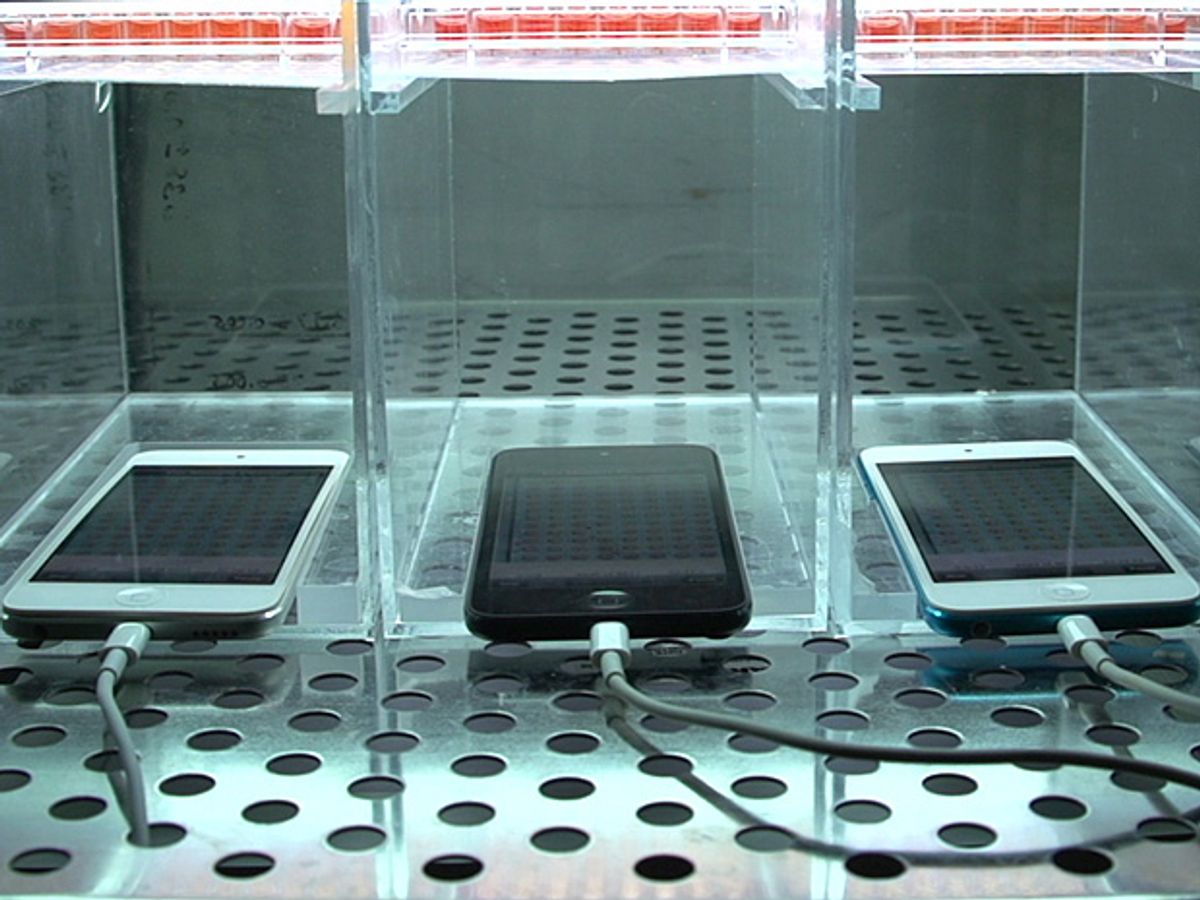The mobile app essentially provides image analysis to drug screening method that is growing in popularity. The new method aims at replacing in vivo (in living subjects) methods with in vitro (in test tube) tests to determine how drugs affect living tissue.
A Houston-based startup, Nano3D Biosciences, has developed just such an in vitro test, dubbed “BiO Assay.” It creates 3-D tissue structures that mimic the results that previously could only be derived from running tests inside living tissue.
The method is based on magnetic levitation. A magnetic nanoparticle assembly consisting of gold nanoparticles, poly-L-lysine, and magnetic iron oxide binds to cells. This makes the cells themselves become magnetic so theycan be manipulated by an external magnetic field. (We’ve seen a variation on this use of magnetic nanoparticles in a cancer drug that is able to eradicate an ovarian tumor in a day.) When the magnetic field is applied above the culture plate of the assay, the cells levitate (thus the name) from the bottom of the surface. This levitation results in them aggregating and interacting with each other to form larger 3-D cultures.
The Rice researchers took this technique and added an imaging system for it. In research published in the journal Scientific Reports (“A high-throughput three-dimensional cell migration assay for toxicity screening with mobile device-based macroscopic image analysis”), the Rice team developed the iOS app as well as the analytic software, scientific protocols, and hardware to go with it. You can see an iPod equipped with the app performing its drug toxicity analysis in the video below.
The app essentially takes time-lapsed images of the 3-D cell cultures that have been exposed to varying levels of a drug. The analytical program then measures each sample and creates time-elapsed movies, graphs and charts of the drug's toxic profile.
“This literally collects about 100 000 data points during a 12-hour, overnight experiment,” said study co-author Shane Neeley, a Rice bioengineering graduate student, in a press release. “That’s all relevant publishable data that relate to the different times, doses, and cell types and other key variables in the experiment.”
Now you may be asking yourself—as I did—why is an iPod app needed for what is essentially a lab-based testing of drug toxicity? If you don’t already have the assay, this app is not going to make your iPod capable of testing the cytotoxicity of the ibuprofen you’re taking.
It turns out the interns of Nano3D Biosciences developed the app because they couldn’t be bothered with taking photos of the assay with their microscopes.
“Without looking in the microscope, just looking at the camera and clicking like a robot, it would take 20 minutes to take pictures of all 96 wells on one plate,” Glauco Souza, Nano3D’s president and chief scientific officer said in the press release. “To analyze that, all 96, with a ruler, took even longer.”
Whether this app will prove useful outside of keeping some lab interns from doing monotonous work remains to be seen. However, the team is trying to see where it can be applied next.
“We’re hoping to get this into some high school classrooms here in Houston, and we’re working with one of Houston’s largest community colleges, Lone Star College, to see if it can be used there,” Souza added.
Dexter Johnson is a contributing editor at IEEE Spectrum, with a focus on nanotechnology.




